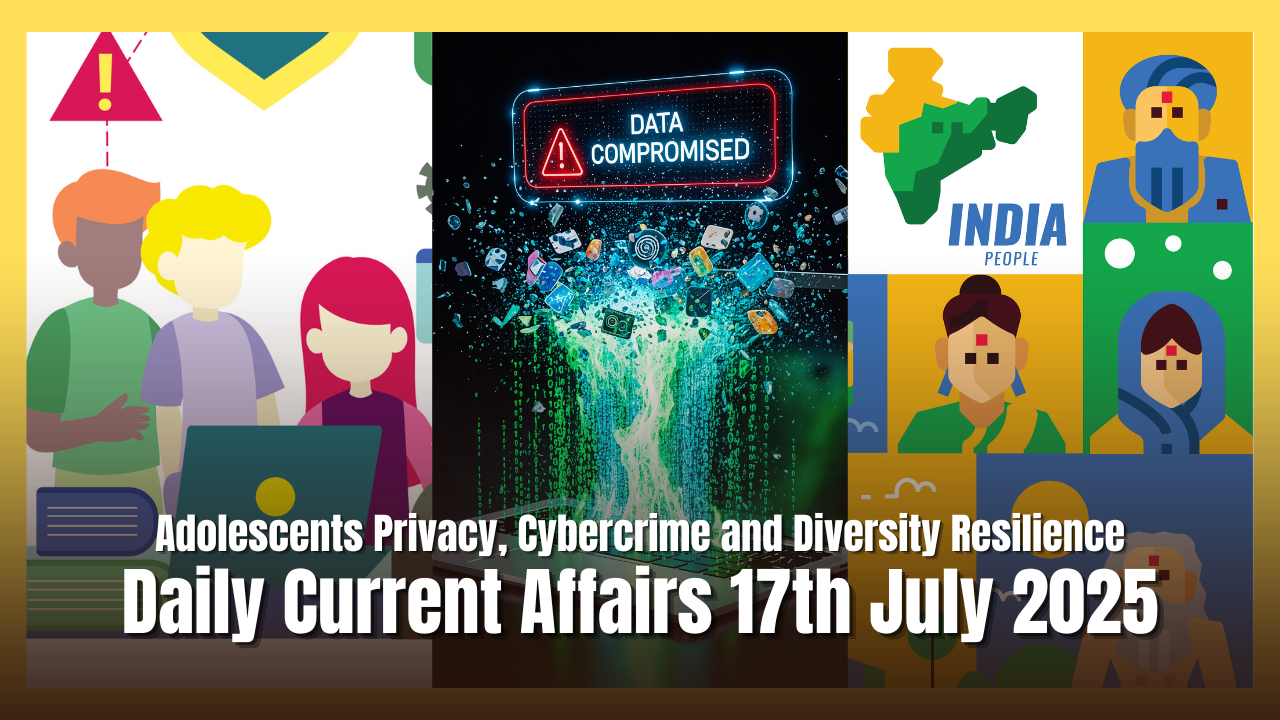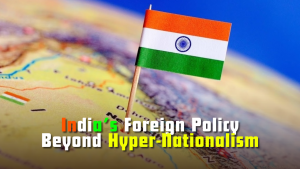Daily Current Affairs 17th July 2025
In this edition of Daily Current Affairs, we bring you concise and important updates on key national and international developments that are shaping the world today.
1) Rights and Privacy of Adolescents
2) India’s Diversity and its Secular Character
3) India’s Labour Market Performance
4) Is the Era of Multilateralism Over?
5) Why Spacecraft Prefer Splashdowns
6) Cybercrime in Delhi: Growing Vulnerability Among Citizens
7) Global Cereal Use by 2034: OECD-FAO Report
Rights and Privacy of Adolescents
The issue with criminalising all adolescent relationships
Context: The Supreme Court’s landmark sentencing judgment in Re: Right to Privacy of Adolescents (May 2025) marks a pivotal shift in the Indian judiciary’s approach to adolescent agency, consent, and sexual autonomy.
More on News
- In a case involving a 14-year-old girl and a 25-year-old man, the Court recognised the complexity of adolescent relationships and the failure of the justice system to protect the very individuals it claims to safeguard.
What Made the Supreme Court’s Judgment in This Case So Unique?
- Exercising its extraordinary powers under Article 142 of the Constitution, the Supreme Court chose not to impose a sentence on a man convicted under Section 6 of the POCSO Act for aggravated penetrative sexual assault.
- The case revolved around a 14-year-old girl from rural West Bengal who voluntarily left home to live with the man, later marrying him and bearing a child at the age of 17.
- The girl’s mother initiated criminal proceedings, and the man was later sentenced to 20 years by a POCSO Special Court.
- Despite observing the young woman’s helplessness—caring for her child while navigating a hostile legal and social environment—the trial court was bound by the rigid provisions of the POCSO Act.
How Did the Higher Courts Respond to the Ground Realities of the Case?
- The Calcutta High Court, in 2022, overturned the trial court’s conviction, acknowledging the woman’s emotional and economic hardship, her voluntary relationship, and the couple’s socio-economic background.
- However, the court also made problematic moralistic comments—including urging female adolescents to suppress sexual desires—prompting media backlash and judicial scrutiny.
- Reacting to the public outcry, the Supreme Court took suo motu cognisance in December 2023.
- While restoring the conviction, the Court dismissed ideas like “non-exploitative sex with minors” and the category of “older adolescents”—despite their recognition in international human rights law and medical science.
Are Romantic Adolescent Relationships Really ‘Exceptional’ Under the POCSO Act?
- An Enfold study of 7,064 POCSO cases across Assam, Maharashtra, and West Bengal (2016–2020) found that 24.3% involved romantic relationships, with 82% of victims refusing to testify.
- Another study by Project 39A and Enfold of 264 Section 6 POCSO cases confirmed that 25.4% were consensual.
- These findings indicate that adolescent sexual exploration, particularly among those over 16, is a widespread and natural phenomenon, not an anomaly.
Why Is Criminalising Consensual Adolescent Relationships Problematic?
- While many High Courts have asserted that POCSO was not intended to penalise consensual adolescent relationships, the current legal framework treats all sexual activity below 18 as exploitative.
- This blanket criminalisation ignores the nuances of agency, consent, and socio-economic realities.
- In Aakash Waghmare v. State of Maharashtra (2025), the Bombay High Court refused to quash a case involving a consensual relationship, citing the absence of legislative reform.
- This highlights the judiciary’s limitations in granting relief without systemic change.
How Did the Legal System Fail the Adolescent Girl in This Case?
- The Supreme Court bluntly acknowledged that the case reflected a “complete failure of our society and our legal system.”
- The girl endured stigmatisation and family abandonment, prolonged institutionalisation, humiliating legal processes and sensational media coverage.
- Despite this, the Court assumed that implementing provisions of the Juvenile Justice (Care and Protection of Children) Act, 2015 would be sufficient to prevent similar trauma—an assumption belied by countless similar cases.
Should the Age of Consent in India Be Revisited?
- The age of consent was raised from 16 to 18 under the POCSO Act in 2012.
- However, this shift fails to acknowledge flawed but voluntary adolescent relationships shaped by poverty, child marriage, gender inequality, and lack of education or alternatives.
- The expert committee emphasised that while the relationship may be legally classified as a crime, the victim did not perceive it as such.
- Her trauma arose not from the act itself but from legal prosecution, police action, and social ostracism.
What Structural Reforms Are Needed to Address Adolescent Agency and Consent?
Rather than criminalising all adolescent relationships, legal reforms must:
- Recognise consensual relationships between adolescents above 16
- Define specific invalidating conditions for consent (e.g., coercion, abuse of authority)
- Strengthen child protection and counselling frameworks
- Provide comprehensive sexuality education and life-skills training
India’s Diversity and its Secular Character
The need to protect India’s linguistic secularism
Context: Recent communal unrest and language-based violence in Maharashtra serve as reminders of the challenges that lie within the complex societal fabric of secular India.
How Is Indian Secularism Different from the Western Model?
- Secularism in India diverges fundamentally from its Western counterpart. In the West—particularly in 19th-century England—secularism evolved as the strict separation of religion from state affairs, without interfering in personal faiths.
- India, while adopting religious freedom in its Constitution, has created its own brand of secularism.
- The Indian model goes beyond neutrality. The state does not endorse any religion or language, but is constitutionally empowered to act against religious or linguistic extremism.
- This balanced interventionism ensures religious tolerance, equality of faith, and linguistic harmony while preserving pluralism.
Judicial Cases
Bijoe Emmanuel v. State of Kerala (1987): The Supreme Court ruled in favor of three students who refused to sing the national anthem on religious grounds, holding that the action of expelling them violated their fundamental right to freedom of religion and conscience under Articles 19(1) and 25.
Kesavananda Bharati v. State of Kerala (1973): This landmark case established the “basic structure” doctrine of the Constitution, reaffirming secularism as a core, unalterable feature of the Constitution, meaning that Parliament cannot amend away the secular nature of the Indian state.
S.R. Bommai v. Union of India (1994): The Supreme Court upheld secularism as a fundamental feature of the Constitution.
Ismail Faruqui v. Union of India (1994): This case involved government acquisition of religious places and held that such acquisition does not violate freedom of religion if adequate compensation is provided.
The Places of Worship Act, 1991 (constitutional challenges ongoing): The Supreme Court is currently hearing challenges to this Act, which prohibits conversion of the religious character of any place of worship as it existed on August 15, 1947.
Why Doesn’t India Have a National Language?
- India deliberately does not designate a single national language to preserve its deep linguistic diversity. Instead, Article 343 of the Constitution declares Hindi in the Devanagari script as the official language of the Union, while allowing States to adopt their own official languages.
- The Constitution, through the Eighth Schedule, recognises 22 scheduled languages, and Article 29 ensures that all citizens, including minorities, have the right to conserve their language, script, or culture.
- The linguistic rights framework prevents any form of discrimination based on language.
- According to the 2011 Census, India has 121 spoken languages and 270 identified mother tongues and about 96.71% of the population speaks one of the 22 scheduled languages.
- This multilingual mosaic reflects India’s constitutional commitment to linguistic secularism.
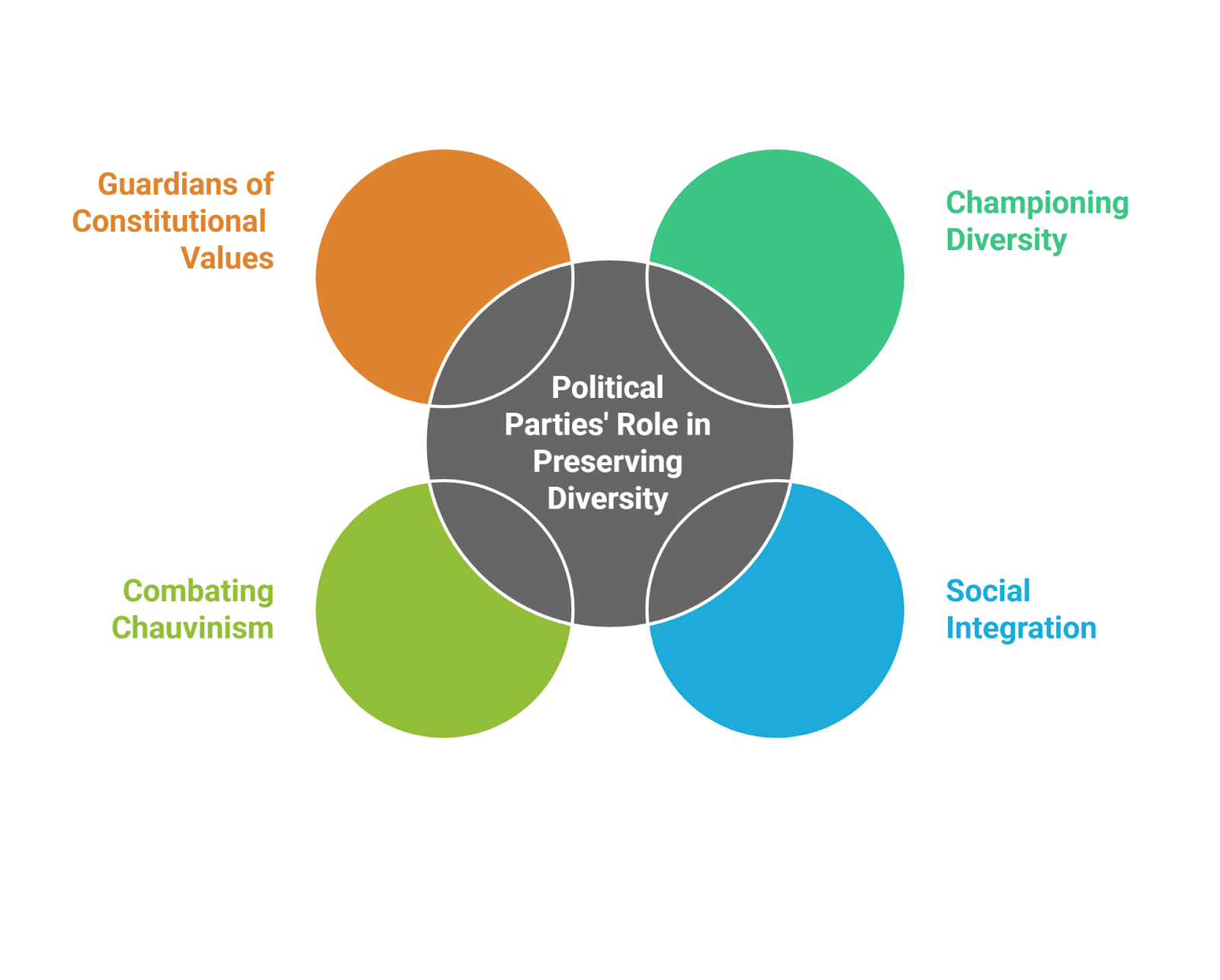
Why Is Linguistic Respect Crucial for India’s Unity?
- Every language in India, regardless of the number of its speakers or geographic location, deserves equal respect and constitutional protection.
- This is vital for preserving India’s linguistic secularism, which is just as important as religious secularism.
- Resistance to the perceived imposition of Hindi is strong in southern and northeastern States.
- Tamil Nadu, led historically by the Dravidian movement, has long defended Tamil and English over Hindi.
- Recently, Maharashtra witnessed language-based violence, targeting non-Marathi speakers—highlighting the dangers of identity politics masquerading as cultural preservation.
- Such aggression undermines the core values of tolerance and liberalism, which are the true protectors of Indian culture.
Can Cultural Conservatism Undermine Indian Secularism?
- India’s strength has always stemmed from its liberal and tolerant approach to differing religions, lifestyles, food habits, and worldviews.
- In a rapidly globalising world, leaning conservatively toward any one language or religion risks fracturing Indian society and weakening its secular foundation.
- Secularism is not about suppressing identity but about harmonising diverse identities.
- The Indian Constitution provides a robust framework to achieve this balance—but its real success depends on inclusive governance and social responsibility.
India’s Labour Market Performance
Government data show fall in number of women at work in rural, urban areas
Context: The Periodic Labour Force Survey (PLFS) for June 2025, released by the Ministry of Statistics and Programme Implementation on July 15, provides key insights into India’s employment landscape.
What Is the Current Unemployment Rate According to PLFS June 2025?
- As per the PLFS data, the unemployment rate (UR) among persons aged 15 years and above remained unchanged at 5.6% between May and June 2025.
- Male UR remained stable at 5.6%.
- Female UR slightly improved, decreasing by 0.1 percentage point.
- Rural UR dropped by 0.2 percentage points, while urban UR rose by the same margin.
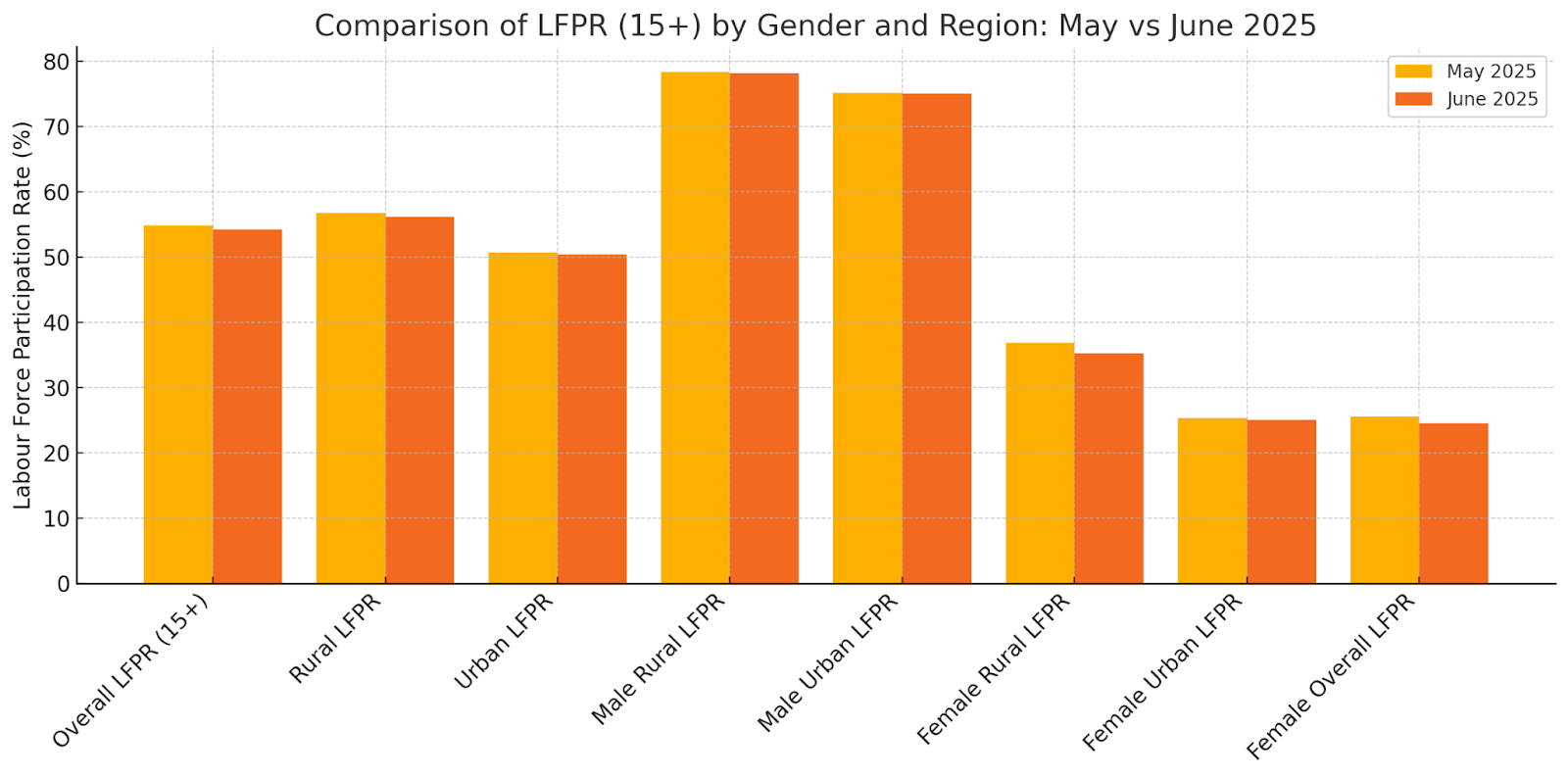
What Does the Worker Population Ratio (WPR) Indicate?
- The Worker Population Ratio (WPR), which measures the proportion of working individuals in the population aged 15 and above, also showed a marginal drop:
- June 2025 WPR: 38.7%, compared to 39% in May 2025.
- This 0.3 percentage point decline points to limited employment generation despite steady unemployment rates.
What Are the Factors Behind the June 2025 Labour Market Trends?
The Union Government attributed the decline in LFPR and WPR to:
- Seasonal agricultural variations, reducing the need for rural labour.
- Extreme summer temperatures, which limited outdoor physical work.
- A shift of unpaid rural female helpers (especially in wealthier households) toward domestic chores.
- A drop in rural inflation, reducing the compulsion for women to engage in wage work.
What Does This Mean for Employment Policy in India?
The data underscores the need for targeted, gender-sensitive policies, including:
- Creating non-farm employment opportunities in rural areas.
- Promoting climate-resilient livelihoods to counter seasonal dips.
- Boosting female workforce participation through skills training, safe workplaces, and flexible job formats.
- Enhancing real-time labour data to guide region-specific interventions.
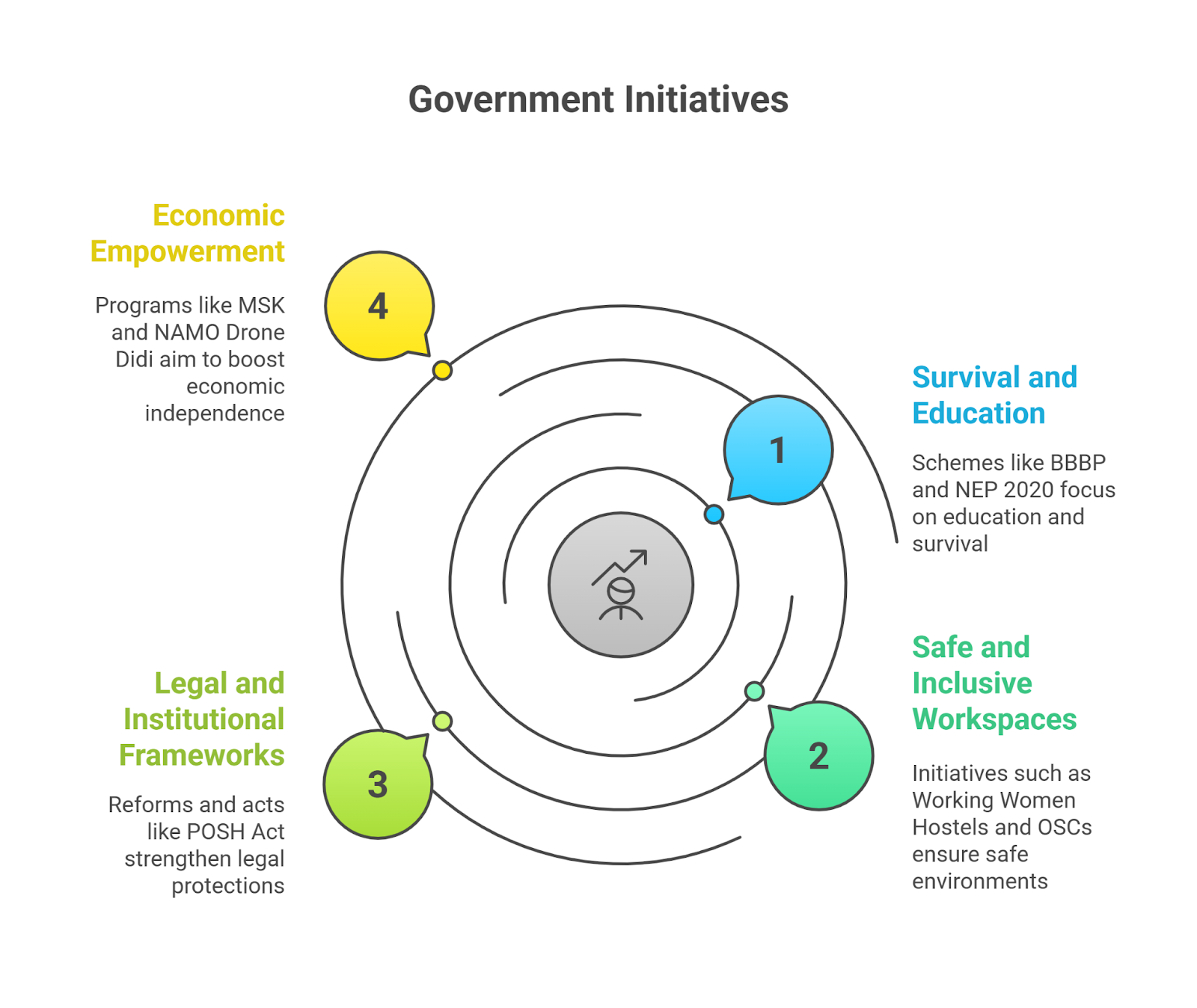
What Are the Key Reasons for Low Female Workforce Participation?
- Safety Concerns at the Workplace: NCRB data shows that workplace sexual harassment cases rose from 402 in 2018 to 422 in 2022, highlighting the hostile work environment many women face.
- Double Burden of Unpaid Work: According to the Economic Survey 2024, unpaid care work by women contributes 3.1% to India’s GDP, compared to just 0.4% by men.
- Educational Aspirations: Recent PLFS data reveals that 37.94% of women are currently not in the workforce because they are pursuing education, marking a shift in priorities and potential for future participation.
- Digital Divide: The NFHS-5 (2019–21) reported that only 33% of Indian women have ever used the internet.
- Low Social Protection and Informal Sector Dominance: As per the eShram database (March 2022), 52.7% of the 287 million registered informal workers were women.
- Rising Household Incomes Leading to Dropout: The International Labour Organisation (ILO) notes that with increased household income, families often prefer women to engage in unpaid domestic work rather than formal employment, viewing the former as higher in social status.
What Is the Way Forward?
- Changing Social Norms through Education: Promoting STEM and skill-based education for girls.
- Example: Girls Who Code, a global NGO, empowers girls with computer science skills.
- Bridging the Gendered Digital Divide: Promoting digital access and literacy is key.
- Example: Google’s Internet Saathi trained rural Indian women to teach digital skills in their communities.
- Ensuring Equal Pay and Flexibility: Implementing gender-sensitive HR policies, equal wages, and remote/hybrid work options to support women’s participation.
- Formalising Informal Work: Bringing women in the informal sector under the formal labour framework will improve working conditions, benefits, and social security.
Is the Era of Multilateralism Over?
The U.S. established and extinguished multilateralism
Context: The re-election of the U.S. President Donald Trump in 2024 represents more than just a political development—it marks a visible shift in the global geopolitical landscape.
More on News
- Under his leadership, the United States has marginalised institutions like the United Nations, undermining the collective bargaining power of the Global South.
- This fragmentation of the global order, driven by strategic bilateral deals rather than consensus-based multilateralism, signals a point of no return.
- Notably, the July 2025 BRICS Summit saw no collective opposition to this emerging reality, reflecting the asymmetry of power in global diplomacy today.
How Did the BRICS 2025 Declaration Fall Short of Supporting the Global South?
- The 2025 BRICS Declaration failed to address the increasing rejection of multilateralism.
- Despite being a platform historically aligned with the Global South, BRICS did not emphasise South-South cooperation in response to unilateral trade tariffs and geopolitical restructuring.
- These tariffs, now used by the U.S. as tools of coercion, prioritise bilateral concessions over global consensus.
What Is the U.S. Strategy in Changing Global Power Dynamics?
- President Trump recognises that the U.S. in 2025 is no longer in a position to recreate a post-World War II-style global framework.
- America’s new focus is on self-reliance and containing China’s global dominance, which largely stems from its manufacturing capacity.
- Traditional tools of diplomacy have been replaced by economic levers—such as trade, sanctions, and technology bans—making institutions like the UN less relevant.
- The collapse of 75 years of multilateral diplomacy has left much of the world uncertain on how to respond.
Where Does This Global Flux Leave India?
- India, poised to become the third-largest economy by 2027 and potentially surpass the U.S. by 2075, must recalibrate its strategy.
- The way forward lies in recognising the decline of multilateralism and strengthening national prosperity through South-South cooperation.
- The traditional glue of the Global South—votes at the UN—no longer serves India’s interests alone.
- India must pursue strategic autonomy, asserting its core interests and neutrality between major powers in global voting patterns.
Why Should India Look East for Growth and Resilience?
- India must realign its trade and strategic priorities toward the East, particularly the ASEAN bloc.
- Offering trade concessions to the U.S. should be balanced by robust economic integration with Southeast Asia.
- Instead of relying on U.S. export markets (e.g., for steel), India should invest in infrastructure—expressways, high-speed rail, digital infrastructure, and scientific institutions.
- Drawing from China’s 2013 model, where it invested nearly half its GDP in infrastructure, India can build the foundation for double-digit, sustainable growth.
Can India Lead the Fourth Industrial Revolution?
- India is emerging as a leader in the Fourth Industrial Revolution, particularly in frontier technologies like Generative AI.
- According to the World Intellectual Property Organisation, India has surpassed the UK and Germany in GenAI patent filings.
- With this momentum, India has a unique opportunity to fuel endogenous growth rooted in innovation, well-being, and digital inclusivity.
How Is India’s Military Modernisation Reshaping Global Power Play?
- Globally, military doctrines are shifting toward integrated air defense, satellites, drones, and cyber capabilities.
- For the first time since Independence, India is positioned to lead in these domains, reducing dependence on expensive ground forces and foreign hardware.
- This transformation offers India not just defense self-reliance, but also strategic flexibility in foreign policy and dual-use technologies for economic growth.
Can the 2026 BRICS Summit Rebuild the Global South?
- India will host the BRICS Summit in 2026—a critical opportunity to redefine the role of the Global South.
- Instead of clinging to G-77-style collective bargaining with the G-7, the focus must shift to reorienting trade, value chains, and regional consumption.
- By channeling exports to meet the growing demand within the South at competitive prices, India can champion a sustainable model of prosperity that supports local production and regional integration.
- This could well be the Global South’s answer to the seismic multilateral realignment of the 1950s.
Why Spacecraft Prefer Splashdowns
Why spacecraft prefer splashdowns over landing on ground

Context: The Axiom-4 mission, which carried Indian astronaut Shubhanshu Shukla and his three colleagues, safely returned to Earth after a 20-hour journey from the International Space Station (ISS), splashing down in the Pacific Ocean.
More on News
- The successful return marks another milestone for commercial human spaceflight and reaffirms why splashdown remains the preferred method of re-entry for most crewed missions.
- India’s own human spaceflight programme, Gaganyaan, is also adopting this method. The Indian Space Research Organisation (ISRO) has designed its crew module to land at sea, in line with global best practices.
What is Splashdown?
- A splashdown is a spacecraft landing method in which a re-entry capsule lands in water, typically an ocean, using parachutes to slow its descent.
- This contrasts with touchdowns on land, which require complex landing gear and advanced control systems.
Why is Splashdown Preferred?
- Safety: Splashdown at speeds of 25–30 km/h is considered safe due to the water’s low viscosity and high density helps absorb impact, offering natural cushioning and reducing the chance of structural damage.
- Simplicity: Returning from space involves extreme speeds (up to 27,359 km/h) during atmospheric re-entry. It eliminates the need for complex engineering systems used in ground landings.
- Global Availability: Oceans cover ~70% of Earth’s surface, increasing the likelihood of safe landing zones. The availability of vast open areas significantly reduces the risk of colliding with infrastructure or obstacles.
- Buoyancy and Recovery: Most modern crew capsules are designed to float. They have a conical shape, and their structure—rounded at the top or bottom—acts like a ship’s hull. This design ensures the module remains buoyant, bobbing on the surface until recovery teams arrive.
- Legacy: NASA has used this method since the Mercury, Gemini, and Apollo missions, including recent missions involving astronauts Sunita Williams and Butch Wilmore.
How is Splashdown Executed?
- Controlled Re-entry: Once the spacecraft re-enters Earth’s atmosphere, usually at 110–120 km altitude, it experiences rapid deceleration due to atmospheric friction. However, this alone is not enough to slow the craft to safe splashdown speeds.
- Parachute Deployment: To further reduce velocity, spacecraft use multiple parachutes in a two-stage process:
-
- At around 18,000 feet, two drogue parachutes are deployed to stabilise and slow the vehicle.
- At approximately 6,500 feet, the drogues are detached, and four main parachutes are released to decelerate the craft further to about 25–30 km/h.
- Gliding Descent and Touchdown: The vehicle doesn’t fall vertically but follows a gliding trajectory at an angle. From the point of re-entry to the splashdown, the spacecraft typically travels 5,000–7,000 km, gradually losing speed until it safely touches down on water.
Cybercrime in Delhi: Growing Vulnerability Among Citizens
Cybercrime Surge: Delhi Citizens Face Growing Vulnerability Online
Context: In today’s highly digitalised Delhi, the surge in cybercrime has emerged as a serious threat. Despite high digital adoption, systemic gaps—like inadequate cyber policing under the IT Act, 2000—persist. A recent Lokniti-CSDS study highlights key vulnerabilities in public awareness, personal exposure, and weak redressal mechanisms.
What is the scale of cybercrime in Delhi?
- According to the Lokniti-CSDS Survey (2025) and data shared by Delhi Police Cyber Crime Cell, Delhi residents lost over ₹700 crore in 2024 to various forms of cybercrime.
- Daily, an estimated 700 new complaints of cyber fraud are registered via the cyber helpline (1930), and the number continues to rise.
- The National Crime Records Bureau (NCRB) data also shows a 111% increase in cybercrimes during the COVID-19 pandemic, indicating a long-term trend. These crimes range from online financial fraud, sextortion, impersonation, phishing scams, to fake call centers and digital arrest scams.
Who are the most affected groups?
- Cybercrime affects all demographics, but low-income individuals are disproportionately vulnerable, due to lower digital literacy and limited access to cybersecurity tools:
- Only 20% of low-income respondents use antivirus software, compared to 73% among high-income groups.
- Only 31% of low-income respondents use two-factor authentication, vs. 75% among high-income individuals.
- Psychological stress is also higher in these groups, with 26% of affected respondents reporting emotional distress post-fraud.
- Notably, even well-educated individuals are not immune. A recent case involved a woman doctor being duped of ₹4.5 crore, one of the largest cyber frauds in Delhi to date.
Where are these crimes happening and how are they executed?
- Cybercrime hotspots are not necessarily geographical but digital and systemic. However, semi-industrial and densely populated residential areas like Mundka and New Ashok Nagar have emerged as physical nodes for syndicates operating fake call centres and sextortion rings.
- Typical methods include:
- Fake digital loan apps or processing fee scams
- Sextortion via WhatsApp video calls
- Digital arrest frauds (impersonating police or CBI officials)
- OTP/UPI phishing
- Pre-activated SIM cards and forged KYC documents
- Delhi Police’s May 2025 crackdown uncovered an interstate cybercrime network spanning Delhi, Rajasthan, and Uttar Pradesh, revealing the multi-state and organised nature of such crimes.

Why is Delhi particularly vulnerable to cybercrime?
- High digital penetration with widespread internet banking and mobile payments.
- Low digital safety practices, e.g., only 50% change passwords regularly, and another 50% use antivirus software.
- Understaffed cyber police units—investigations under the IT Act can only be conducted by officers of inspector rank or above, but many stations lack adequate personnel.
- Low trust and awareness about official reporting platforms—only 42% know the 1930 helpline, and just 25% know about cyber police stations.
- Institutional inefficiency—70% of victims did not recover any money, while only 21% reported the crime formally.
How effective is the government’s response?
Government efforts, while widespread in communication, lack depth and reach. The Digital Personal Data Protection Act, 2023, and existing IT Act provide a framework, but cybercrimes being bailable, limited deterrence exists. Experts like Advocate Pawan Duggal argue for reforming the IT Act and making the police approach more citizen-centric.
Global Cereal Use by 2034: OECD-FAO Report
Biofuel demand to consume 27% of global cereals by 2034: OECD-FAO report
Context: According to the latest OECD-FAO Agricultural Outlook 2025–2034, only 40% of the world’s cereal production will be consumed directly by humans. The rest will be split between animal feed and biofuel or industrial uses, reflecting a dramatic shift in how we use one of our most essential crops.
What Does the Report Reveal About Cereal Use Trends?
- Key Findings:
-
-
- Human Consumption (40%): A declining share as biofuels and industrial uses expand.
- Biofuels & Industrial Use (27%): Up from 23% in last year’s forecast, driven by rising demand in emerging economies.
- Animal Feed (33%): Remains a major use case, supporting livestock production.
-
- Key Drivers of Biofuel Growth: India, Brazil, and Indonesia are expected to lead this surge in biofuel demand, which is now projected to grow at 0.9% annually, up from 0.6%.
Why Is Food vs. Fuel Competition Intensifying?
- Despite concerns over sustainability, biofuel production will continue to rely heavily on food-based feedstocks like maize and sugarcane.
- Advanced alternatives such as cellulosic feedstocks—crop residues, energy crops, and woody biomass—remain underutilised due to technological and economic constraints.
- Limited adoption of advanced biofuels means food crops will still be a primary feedstock.
How Will Cereal Production Keep Up With Demand?
-
- Farmland Expansion Slows, Yields Improve: Global cereal production is expected to grow at 1.1% per year, driven mostly by yield improvements (0.9% annually). Expansion of harvested area will slow to 0.14% per year, less than half the rate of the previous decade.
-
Regional Shifts in Cereal Consumption:
-
- India and Southeast Asia will contribute 39% of global cereal consumption growth by 2034, up from 32%.
- China’s share will decline sharply to 13%, reflecting changing dietary habits and slower population growth.
What Does Rising Demand for Animal-Based Foods Mean?
- As incomes rise, especially in middle-income countries, diets are shifting toward higher protein intake. This trend is reshaping global agriculture:
- Meat, dairy, and egg production is projected to grow by 17%.
- Livestock inventories will expand by 7%.
- Agricultural and fish production will rise by 14%, driven by productivity gains.
- However, this growth comes with environmental costs: GHG emissions from agriculture are expected to increase by 6%. Encouragingly, the carbon intensity of these emissions is projected to decline, thanks to improved farming practices.
Nutrition: Gains and Gaps
- Global Trends: Per capita daily calorie intake from animal and fish products will grow by 6% globally. In lower-middle-income countries, intake will surge by 24%, reaching 364 kcal/day—a sign of improving nutritional access.
- Persistent Inequality: In low-income countries, daily intake from animal products will remain at just 143 kcal/day. This is well below the 300 kcal benchmark used by the FAO to assess affordability of a healthy diet.
Subscribe to our Youtube Channel for more Valuable Content – TheStudyias
Download the App to Subscribe to our Courses – Thestudyias
The Source’s Authority and Ownership of the Article is Claimed By THE STUDY IAS BY MANIKANT SINGH
